Italy and mass tourism: more is not always better
By francesca bezzone | August 8, 2017

Tourism is one of the main motors of Italian economy, but something has been going awry in the past few years. Senseless mass tourism hasn’t really done all that good to Italy’s small economy: our “botteghe” and small restaurants have been struggling against larger, cheaper made-in-China souvenir stores and fast food chains. Because that’s what the mass tourist wants: everything cheap, everything quick, nevermind if they leave the country with a belly full of French fries and plastic Torri di Pisa: that’s often what they are after.
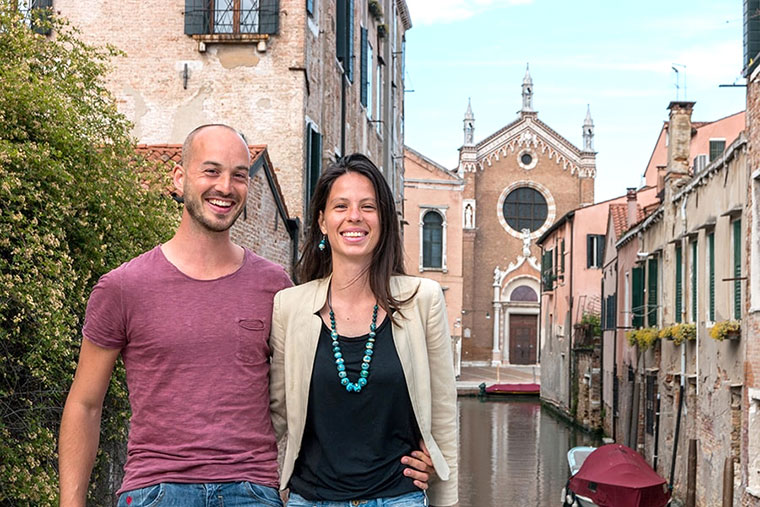
Among all of our beautiful “città d’arte” Venice is the one that had it worse. At the same time, it is also the only one that has a bona fide rescue team, the people of “ Venezia Autentica ,” a beautiful initiative created by a young, lovely couple Valeria, from France, who fell in love with Venice in 2014, on her fist visit, and Sebastian, half Italian and half German, but born and bred in Venice.
The two stepped on common ground when they realized the city needed to be more appreciated in its full authenticity, it needed to become to the eyes of the world what it is to the eyes of its inhabitants: this is why they created “ Venezia Autentica ,” an online source filled to the brim with essential information about the places, the people and the product of “la Venezia vera,” the real Venice.
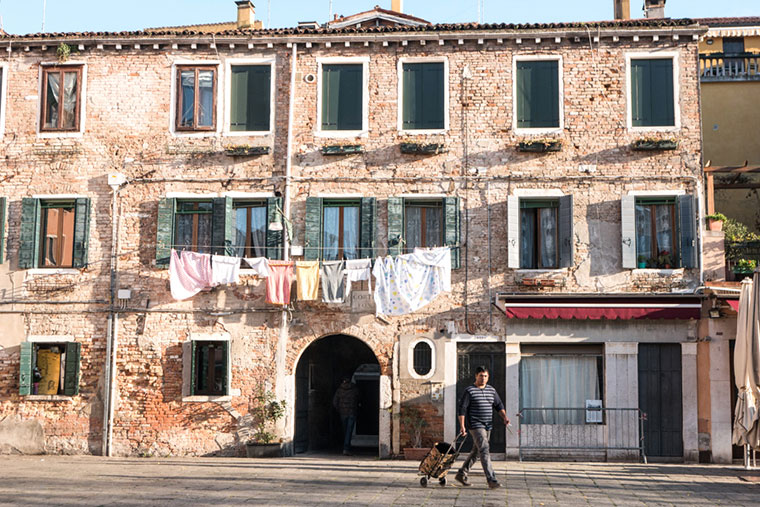
L’Italo Americano had a virtual meeting with Valeria and Sebastian and chatted about “ Venezia Autentica ” and, of course, about their love for La Serenissima.
Tell us more about “Venezia Autentica:” how does it work and what are its main aims? “Venezia Autentica” is a social enterprise we’ve founded in Venice to create a better future for the Venetians in their city. It’s mainly web based and we’re using our social media and our website veneziaautentica.com to leverage the international love for Venice and put it to good use (they have more than 30.000 followers on social media). Indeed, we help people from all around the world to discover and understand Venice and the Venetians better and equip them with tools and knowledge which they can use to have a more rewarding experience of Venice, while feeling good about maximizing their positive impact on the city.
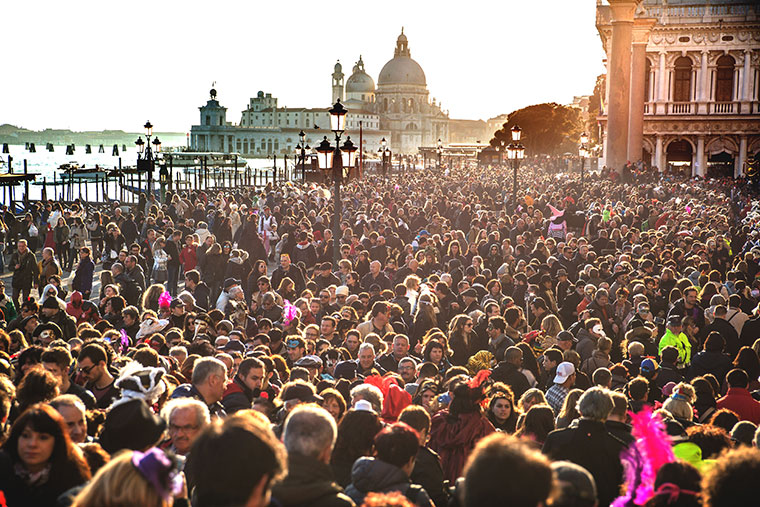
We do this because we believe that the most immediate remedy to the main current threat to Venice, the massive exodus caused by the consequences of mass tourism, is to help Venetians stay working in Venice so that they can afford to live here and the local quality services and products essential to the local life do not all disappear. We’re convinced that international visitors can really help with this and we’ve decided to make it very easy for them to do so. We also commit ourselves to helping more of the local community by supporting local citizens and associations with their projects: our main aim is to create a sustainable future for the Venetians – by birth or by choice- and to improve the quality of life in Venice, both for the locals and the visitors.
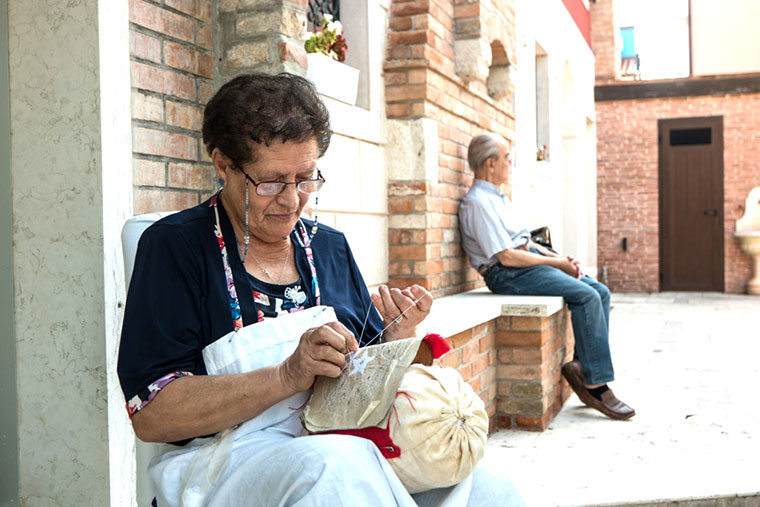
What are the aspects of mass tourism that, in your opinion, have been damaging your city the most? The change of market to which it leads. The exponential growth of mass tourism in Venice has led a staggering number of small businesses, family-run businesses and artisans’ shops to disappear to be replaced by souvenir shops selling cheap imported plasticky things.
This happens because the great majority of the people spending only a few hours in Venice, don’t have the time to understand the city and appreciate the beauty and great value of Venetian life, culture, food, and crafts. As a consequence, thousands of Venetian families had to close their businesses and had to move out of their city.
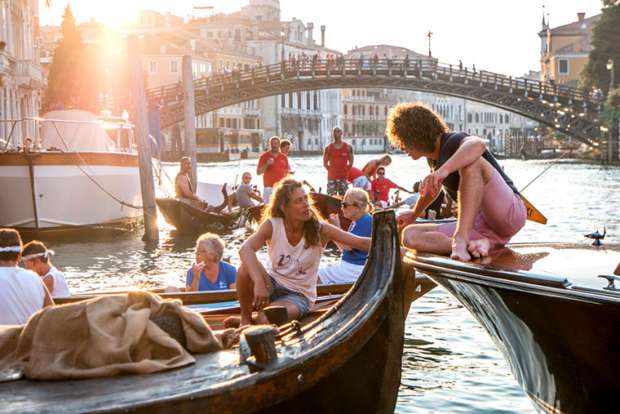
Was there a precise moment, an epiphany so to speak, you felt things had gone too far and there was a real need to protect Venice from mass tourism? There was indeed an epiphany, but it was more about the way Venice could be ‘saved,’ how it could be protected from mass tourism. Indeed, we believe that the feeling that something has to be done in Venice is something that strikes most of the people who sets foot in town and without a doubt, every person living here knows it.
You both have ties with foreign countries: how much do you feel the image of Venice abroad has been negatively influenced by stereotypes? We live here and know the city from the inside, but since one of us is French and the other is half German we also know, indeed, how Venice is portrayed from the outside. Some stereotypes about Venice are actually quite true, while others are far from the truth. In both cases, however, the information given abroad is overly simplified and it gives a wrong image of the city.
For example, media outlets say that the city is overwhelmed by tourists. This is only partially true: in the summertime, when millions of people come to Venice, the moment you step away from the day-trippers-paths, you will admire completely empty alleys and squares. Also, all museums but one are almost completely empty and a real joy to visit.
These stereotypes, although they might not sound harmful, could be one of the factors that lead people not to stay in Venice for a few days and therefore not to take the time to discover and enjoy the city, but rather to come only for a matter of hours.
Do you feel the concept behind “Venezia Autentica” could -or should!- be exported to other parts of Italy? We strongly believe that the concept behind “Venezia Autentica” could work for every city of arts, every European city which is facing the challenges that mass tourism brings. Florence and Barcelona, for example, could benefit greatly from such a model. Currently, Venice is the city in Europe that is suffering the most from mass tourism and it is used as a worldwide negative example of the excesses of tourism and a lack of sustainable management. We are convinced that “Venezia Autentica’”s model could greatly benefit all those cities, and we’d be willing to help them implement it!
How has “Venezia Autentica” been received by Venetians and what feedback have you received from tourists? We must say that many people, both Venetians and tourists, have been very supportive of our project since the very beginning, and this enthusiasm and support is constantly growing. We regularly get extremely sweet emails and messages on social media from people thanking us for our work; we receive wonderful comments on our social media profiles on a daily basis; we receive private messages from artisan thanking us for the sale they made to and the great time they had with people who found their shop on our website. We believe in what we do and we are very committed to it, but we can’t deny that working 80 hours per week on “Venezia Autentica” can be very tiring, yet these messages make us so happy and give us an incredible amount of positive energy to keep on working hard.
We must ask: one spot to experience la vera Venezia. In our opinion, La vera Venezia, or la Venezia Autentica, only exists as a whole. The moment you reach Venice, you immediately SEE that it is unlike any other city you have ever seen. The history of Venice is just as unique, as it has been the longest lasting independent state in human history.
This unique city with its unique history, as a natural consequence, gave birth to food, culture, arts, crafts, sports and a lifestyle which are just as unique.
We are convinced that a person wanting to experience the Authentic Venice as a whole, can only do so by spending at least a few days here, walking off the beaten path, visiting artisans’ shops, trying the local food. By visiting Venice this way, you can only fall in love with the city.and understand why there is only one Venice and why it deserves to be preserved.
How is, truly, living in Venice today? Living in Venice today is difficult and a dream at the same time.
Il turismo è uno dei motori principali dell’economia italiana, ma qualcosa è andato storto negli ultimi anni. In realtà, un insensato turismo di massa non ha fatto poi così bene alla piccola economia italiana: le nostre “botteghe” e i piccoli ristoranti stanno combattendo contro i negozi di souvenir Made in China più grandi e più economici e contro le catene dei fast food. Perché questo è ciò che vuole il turista di massa: tutto a buon mercato, tutto veloce, non importa se poi lasciano il Paese con la pancia piena di patatine fritte e Torri di Pisa di plastica: spesso è tutto quel che rimane.
Tra tutte le nostre bellissime “città d’arte”, Venezia è quella a cui è andata peggio. Allo stesso tempo, è anche l’unica che ha una squadra di soccorso bona fide, le persone di “Venezia Autentica”, una bella iniziativa creata da una giovane e bella coppia: Valeria, francese, che si è innamorata di Venezia nel 2014, durante la sua prima visita, e Sebastian, metà italiano e metà tedesco, ma nato e cresciuto a Venezia.
I due hanno raggiunto un terreno comune quando hanno capito che la città aveva bisogno di essere più apprezzata nella sua piena autenticità, doveva diventare agli occhi del mondo ciò che è agli occhi dei suoi abitanti: è per questo che hanno creato “Venezia Autentica”, una fonte online piena fino all’orlo di informazioni essenziali sui luoghi, sulle persone e sul prodotto della “Venezia vera”.
L’Italo Americano ha avuto un incontro virtuale con Valeria e Sebastian e ha parlato di “Venezia Autentica” e, naturalmente, del loro amore per La Serenissima.
Diteci di più su “Venezia Autentica”: come funziona e quali sono i suoi principali obiettivi? “Venezia Autentica” è un’impresa sociale che abbiamo fondato a Venezia per creare un futuro migliore per i veneziani nella loro città. È principalmente basata sul web e stiamo usando i nostri social media e il nostro sito web veneziaautentica.com per sfruttare l’amore internazionale per Venezia e metterlo a buon uso (abbiamo più di 30.000 seguaci sui social media). Infatti, aiutiamo le persone provenienti da tutto il mondo a scoprire e a capire meglio Venezia e i veneziani e le dotiamo di strumenti e conoscenze che possono essere utilizzati per avere un’esperienza più gratificante di Venezia. Dandogli il meglio massimizzano il loro impatto positivo sulla città.
Lo facciamo perché crediamo che il rimedio più immediato alla principale minaccia odierna a Venezia, l’esodo massiccio causato dalle conseguenze del turismo di massa, sia quello di aiutare i veneziani a rimanere a lavorare a Venezia in modo da potersi permettere di vivere qui e i servizi di qualità locale, e di fare in modo che i prodotti essenziali per la vita locale non scompaiano tutti. Siamo convinti che i visitatori internazionali possano veramente aiutare in questo senso e abbiamo deciso di rendere tutto molto semplice.
Ci impegniamo ad aiutare maggiormente la comunità locale sostenendo i cittadini e le associazioni locali con i loro progetti. Il nostro obiettivo principale è creare un futuro sostenibile per i veneziani – per nascita o per scelta – e migliorare la qualità della vita a Venezia, sia per i residenti che per i visitatori.
Quali sono gli aspetti del turismo di massa che, secondo voi, hanno maggiormente danneggiato la vostra città? A nostro avviso, il cambiamento a cui conduce il mercato. La crescita esponenziale del turismo di massa a Venezia ha portato a far scomparire un numero impressionante di piccole imprese, aziende a conduzione familiare e negozi di artigianato che sono stati sostituiti da negozi di souvenir che vendono oggetti di plastica economici e importati.
Ciò accade perché la grande maggioranza delle persone, che trascorrono solo poche ore a Venezia, non ha il tempo di capire la città e di apprezzare la bellezza e il grande valore della vita veneziana, della cultura, del cibo e dell’artigianato.
Di conseguenza, migliaia di famiglie veneziane hanno dovuto chiudere le proprie attività e hanno dovuto lasciare la loro città.
C’è stato un momento preciso, un’epifania per così dire, in cui avete sentito che le cose erano sfuggite di mano e c’era un bisogno reale di proteggere Venezia dal turismo di massa? C’è stata in effetti un’epifania, ma è stata più sul modo in cui Venezia poteva essere “salvata”, su come poteva essere protetta dal turismo di massa. Infatti, crediamo che la sensazione che qualcosa debba essere fatto a Venezia è qualcosa che colpisce la maggior parte delle persone che mettono piede in città e senza dubbio, ogni persona che vive qui lo sa.
Avete entrambi rapporti con Paesi stranieri: quanto sentite che l’immagine di Venezia all’estero è stata negativamente influenzata dagli stereotipi? Viviamo qui e conosciamo la città dall’interno, ma visto che una di noi è francese e l’altro è metà tedesco, sappiamo anche come Venezia è in realtà mostrata all’esterno. Alcuni stereotipi su Venezia sono effettivamente veri ma altri sono ben lontani dalla verità. In entrambi i casi, tuttavia, le informazioni fornite all’esterno sono eccessivamente semplificate e danno un’immagine sbagliata della città.
Ad esempio, i media dicono che la città è sopraffatta dai turisti. Questo è vero solo in parte: in estate, quando milioni di persone vengono a Venezia, nel momento in cui ci si allontana dai percorsi battuti dai visitatori giornalieri, ammirerete vicoli e piazze completamente vuoti. Inoltre, tutti i musei tranne uno sono quasi completamente vuoti e sono una vera gioia da visitare.
Questi stereotipi, anche se potrebbero non sembrare dannosi, possono essere uno dei fattori che inducono la gente a non restare a Venezia se non per pochi giorni e quindi a non prendersi il tempo necessario a scoprire e godere della città, ma piuttosto a venire solo per una manciata di ore.
Sentite che il concetto dietro “Venezia Autentica” possa – o dovrebbe – essere esportato in altre parti d’Italia? Crediamo fortemente che il concetto di “Venezia Autentica” potrebbe funzionare per ogni città d’arte che sta affrontando le sfide che il turismo di massa porta. Ad esempio, Firenze e Barcellona potrebbero trarre beneficio da un simile modello. Attualmente Venezia è la città in Europa che soffre maggiormente del turismo di massa e viene utilizzata come un esempio negativo a livello mondiale degli eccessi del turismo e della mancanza di una gestione sostenibile. Siamo convinti che il modello di Venezia Autentica possa portare grande beneficio a tutte quelle città e siamo disposti ad aiutarle a metterlo in pratica!
Come è stata ricevuta “Venezia Autentica” dai veneziani e quali commenti avete ricevuto dai turisti? Dobbiamo dire che molte persone, sia veneziane che turisti, hanno sin dall’inizio dato un grande appoggio al nostro progetto e questo entusiasmo e sostegno è in costante crescita. Riceviamo regolarmente messaggi di posta elettronica estremamente dolci da parte di persone che ci ringraziano per il nostro lavoro. Riceviamo messaggi privati dagli artigiani che ci ringraziano per le vendite che hanno fatto e il tempo che hanno trascorso con le persone che hanno trovato il loro negozio sul nostro sito web.
Crediamo in ciò che facciamo e siamo molto impegnati, ma non possiamo negare che lavorare per “Venezia Autentica” 80 ore alla settimana può essere molto faticoso, tuttavia questi messaggi ci rendono così felici e ci danno un’incredibile quantità di energia positiva per continuare a lavorare duramente.
Dobbiamo chiederlo: un posto per sperimentare la vera Venezia. A nostro avviso, la vera Venezia, o la Venezia Autentica, esiste solo nel suo complesso. Nel momento in cui si raggiunge Venezia, si vede immediatamente che è diversa da qualsiasi altra città mai vista prima. La storia di Venezia è altrettanto unica, in quanto è stata il più longevo stato indipendente della storia umana.
Questa città unica, con una storia unica, come conseguenza naturale, ha dato vita a cibo, cultura, arte, artigianato, sport e stile di vita che sono altrettanto unici.
Siamo convinti che una persona che voglia sperimentare la Venezia Autentica nel suo complesso, possa farlo solo passando almeno qualche giorno qui, camminando lontano dalle strade battute, visitando i negozi degli artigiani, provando il cibo locale. Se si visita Venezia in questo modo, ci si può solo innamorare della città e capire perché c’è solo una Venezia e perché merita di essere preservata.
Come è, davvero, vivere oggi a Venezia? Vivere a Venezia oggi è difficile ma allo stesso tempo è un sogno.

26 issues of L’Italo Americano digital edition

Support L’Italo Americano
If you’re able to, please support L’Italo Americano today from as little as $1.

Weekly Newsletter

- Artificial Intelligence
- Entertainment
- Climate & Environment
Italy: The Problem Of Overtourism In Italian Cities
the issue around overtourism has heated up. what it is, why we discuss it, and what bad consequences it has, you might like, contact form.

Customized and Escorted Tours of Italy
Mass Tourism in Italy and How to Avoid the Crowds
It’s not a secret that Italy is a popular destination, nor is it difficult to understand why. The unmatched beauty, world class food and wine, charming locals, crystal clear sea water, impressive mountains. But let’s stop daydreaming and get back to business.
What is Mass Tourism?

Mass tourism can be described as going to see a place that became famous through mass culture like social media, film, or television. We go, snap the selfie, and leave. By traveling in this way, visitors often miss the essence of the destination, and can even damage it.
We’re not saying that these places are not worth visiting. They ar e famous for a reason. However we must ask ourselves how we can travel more sustainably. That is, leaving these destinations better than when we arrived.
Let’s take Cinque Terre as the first example. Such a large amount of people have been traversing this small area that local authorities have been brainstorming ways to limit the amount of visitors.

Then there is Capri. This island near Naples has 12,000 residents, but roughly 4 million yearly visitors. Let that sink in for a second.
What Can I Do?
Is it still possible to have the dream Italian vacation while traveling responsibly? Yes, yes, absolutely yes.
Here are 6 easy steps to enjoy a less crowded Italy and travel more sustainably.
1. Use e-bikes, e-scooters, and e-boats wherever possible.

Rome and other Italian cities have started using electric transport, and all you need to ride is a smart phone to scan the QR code on the bike or scooter. As always, use caution when riding.
2. Take a walking tour.

Not only will you be fighting air pollution, but you will be supporting local tour guides. Additionally, you’ll have the unique opportunity to benefit from locals in the know.
3. Take unique cooking classes, like vegetarian or vegan inspired.

We know at this point that reducing the amount of meat consumed is better for the environment, but there’s another benefit. We work with a number of organic farms that are ready to teach you unique ways of cooking what’s already in the garden.
Local experts = better experience, giving back to the destination.
4. Visit in the off-season .

5. Stay at an agriturismo/farm stay or an eco-friendly hotel.

Agriturismos are ideal places to stay in Italy for a number of reasons. You to feel more immersed in the local culture, and they offer blissful relaxation and rejuvenation. Plus, the food is always fresh and impossibly delicious.
Check out why agriturismos are the ideal accommodation during Covid-19 and after.
6. Visit less-frequented destinations.

Our mission at Italy Vacation Specialists is to showcase a different, less overrun Italy. We experience Italy better by exploring without the crowds and returning home more knowledgeable. A few of our suggestions are:
- Instead of the Amalfi Coast, consider the Cilento Coast
- Instead of Capri, consider Ischia or Calabria
- Instead of city wine tours, try a winery near Mt. Vesuvius
- Instead of only Tuscan wineries, explore the Italian harvest in different regions
The travel industry is in a unique position post-Covid . While the return of tourism is essential to Italy’s economy, we must honor the country, people, and culture.
We have the opportunity to hit the reset button on tourism. Now is the time to travel more authentically, more responsibility and experience Italy better together.

For further reading check out:
Weddings & honeymoons in Italy
Our spa tours
- Uncategorized
Leave a Reply Cancel reply
Your email address will not be published. Required fields are marked *
Save my name, email, and website in this browser for the next time I comment.
This site uses Akismet to reduce spam. Learn how your comment data is processed .

Italia. Open to meraviglia.

Landscapes of Aosta Valley

Sailing holidays or mini day cruises: Italy viewed from the sea is even more beautiful

Bibione, the Sports Lovers' Beach

Sardinia, where canyoning goes from mountains to the sea
Landscapes that will take your breath away, rich history, and delicious food, your trip to italy will be nothing short of unforgettable. , unmissable sites.
- UNESCO sites
- Thermal baths
Food and wine

The best Italian factory tours from one city to another

Mountain holidays, places to go for unique experiences for children

The sky in a room: 10 hotels where you can sleep under the stars and rediscover yourself
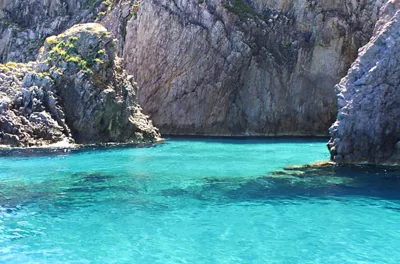
Seven marvellous archipelagos of Italy to revitalize yourself!
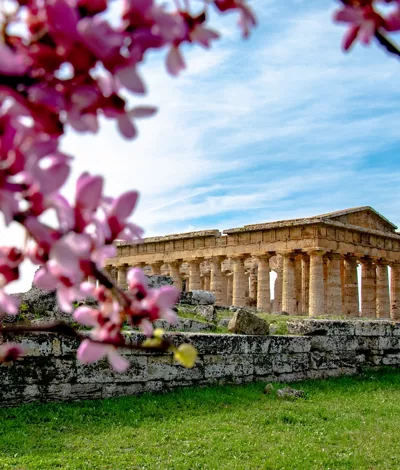
Cilento, between unspoilt beaches, wild nature and charming hamlets

Thermal baths in Valtellina: a land of absolute well-being
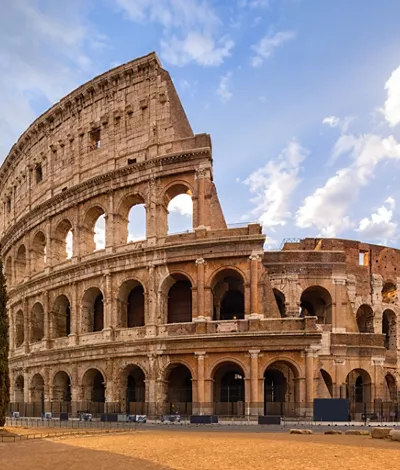
The best trails in UNESCO heritage sites in Italy: 10,000 steps amid nature and beauty

The 15 Italian UNESCO Intangible Cultural Heritage excellences
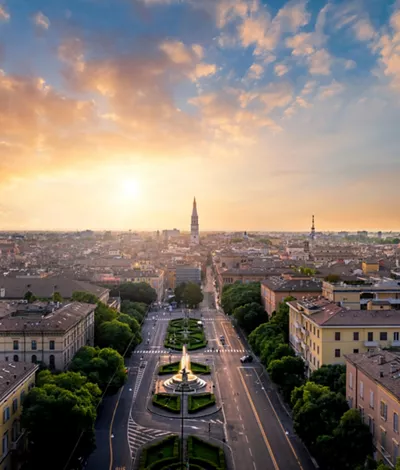
Artistic masterpieces and gastronomic marvels in Modena
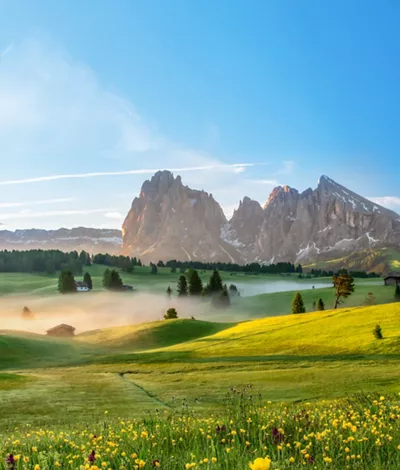
The Dolomites: the most beautiful architectural work in the world
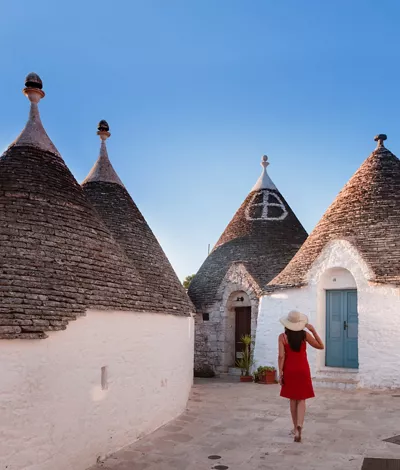
Alberobello, the Trulli capital, a fairy tale experience
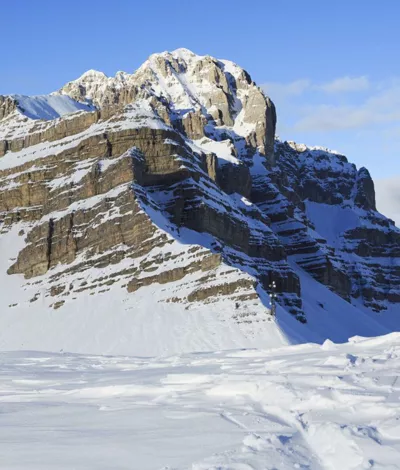
Emilia-Romagna
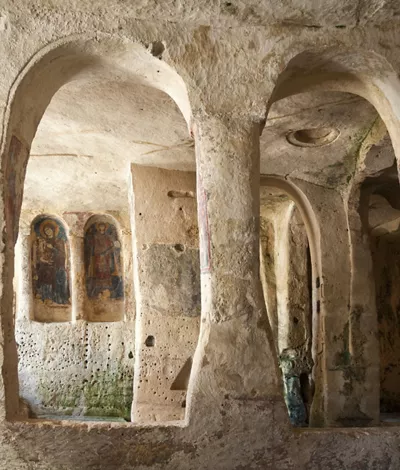
Small and proud, with a focus on sustainability. Here are the most charming rural villages to visit in Italy

Cycling around nature and historic hamlets in Abruzzo
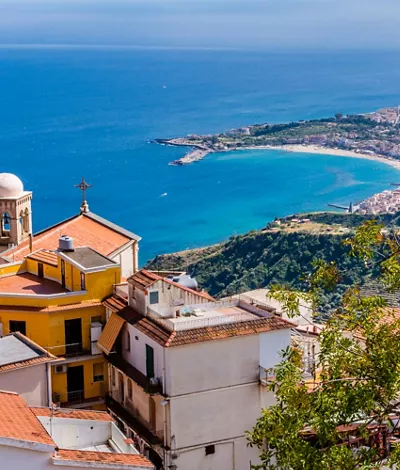
Tax breaks for moving to the charming villages of central and southern Italy
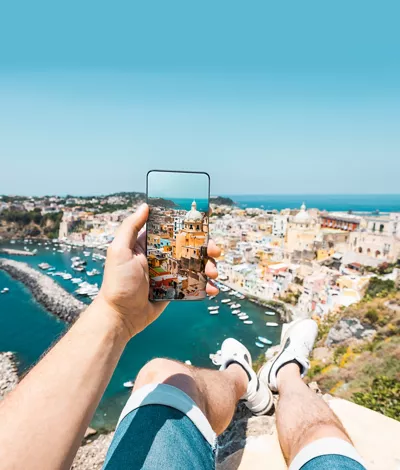
Seaside Villages
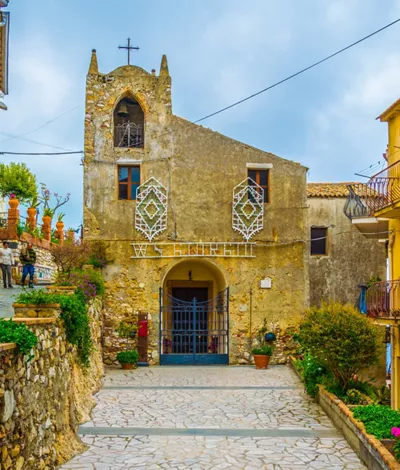
Castelmola, a window on the sea a few steps from Taormina
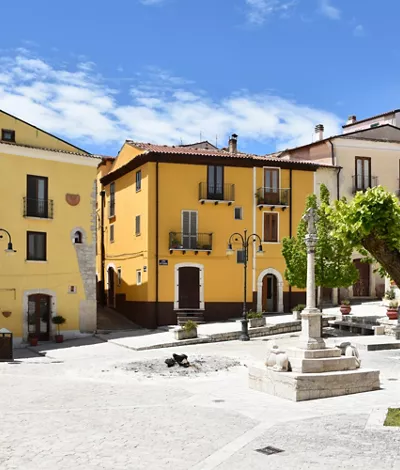
Frosolone: one of the most beautiful Italian villages, in Molise

3 of the best wellness itineraries in Emilia Romagna
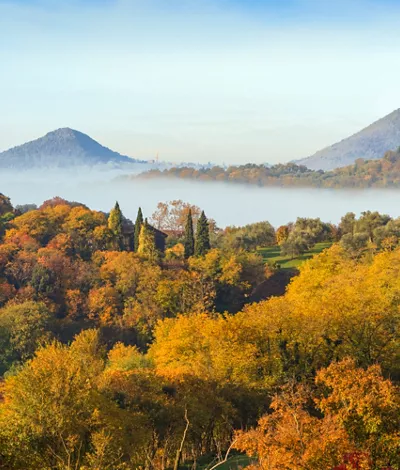
A wellness weekend at the Euganean Spas
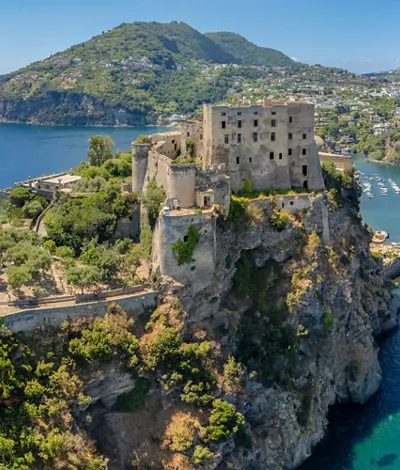
Ischia, the island of wellbeing among thermal gardens and natural springs

Outdoor spas in Lazio, oases of relaxation and wellness to suit all tastes
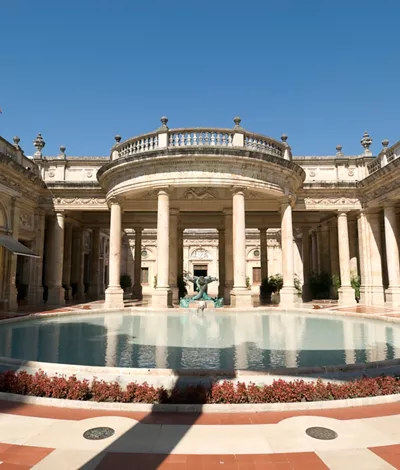
Montecatini Terme, historical thermal centre in Tuscany
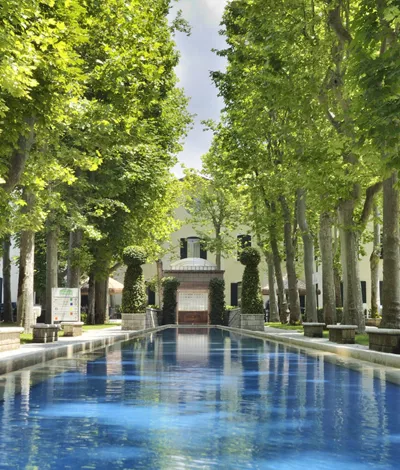
Terme di Caramanico, a haven of wellness and relaxation

Restaurants

The piadina: queen of Romagna

Pizza, gnocchi, walnuts and lemons: flavours along the Sorrento Peninsula

Wine Routes set amidst hills and lakes at the feet of the Dolomites
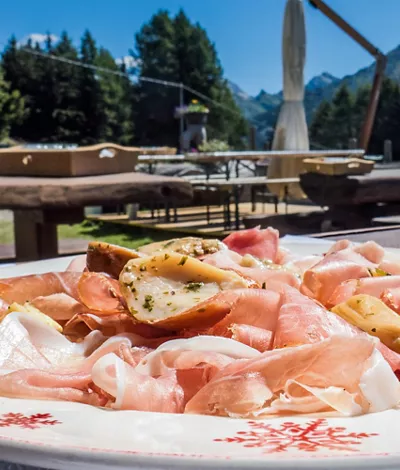
Mountain flavors: the typical products of the Aosta Valley

Journey through taste, the discovery of Italian pasta, between history and curiosity

Venice Marathon
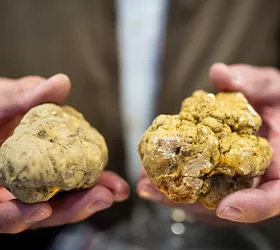
Alba’s International White Truffle Fair

Medieval Festival

Arezzo Antiques Fair

MICAM Milano 2024

2024 MONZA FORMULA 1 GRAND PRIX

Longines Global Champions Tour

Varese City Run
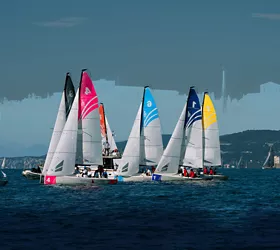
Catania Book Festival


Cous Cous Fest

Cremona's nougat festival

Romaeuropa Festival

The unique feast of Santa Rosa in Viterbo
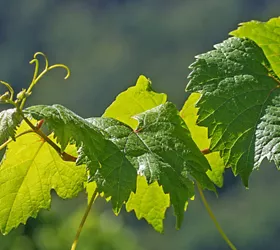
Vigneti aperti 2024

The Palio of Asti
Discover italy.

Aosta Valley
The Aosta Valley is a paradise for visitors seeking outdoor experiences in nature while exploring history and traditions The smallest region in Italy, dotted with the highest peaks in the Alps, it is the ideal destination for anyone who enjoys winter sports and high-altitude walks. Its green valleys and fairy-tale castles make the Aosta Valley an enchanting place to experience all year round.

Piedmont is sure to enchant you with its mountains, hills, typical flavours and uniquely elegant cities An extraordinary heritage of art and history, culture and nature, characterises Piedmont, a region with a thousand faces, one more interesting than the other: cities of rare elegance, mountains that lend themselves to splendid skiing or walking, fascinating villages, hills that are among the best known in the world for their extraordinary wine production.

Lombardy: a dynamic land immersed in the present and reaching toward the future, but with an extraordinary heritage of art and nature Lombardy is a region in the north of Italy known for its industry and finance, of course, but also for its art and extraordinary landscapes, starting with the picturesque lakes and its mountains, Valcamonica and Valtellina in primis. Capital and symbolic city, Milan represents the industrious heart that goes hand in hand with other cities with a vibrant spirit.

Trentino is sure to amaze you with its immense natural heritage, the spectacular splendour of the Dolomites and fascinating sites steeped in history Discover Trentino’s culture of slow travel, taking the time to savour every corner among nature and cultural trails and educational farms. You will find hundreds of hotels offering wellness centres for truly relaxing holidays for the whole family in some of Italy's most beautiful villages, set in unique landscapes.

South Tyrol
Alto Adige is a dream place to discover all year round amidst green valleys and snow-capped peaks Combine the relaxation of spa treatments with the pleasure of fun in the snow for a real wellness boost amidst Alpine lakes, beautiful villages and state-of-the-art ski facilities suitable for all ages. All this and more in the majestic scenery of the Dolomites, a UNESCO World Heritage site in Alto Adige.

Veneto, a region of wonder, with cities of art of undisputed beauty, as well as the most pristine nature The beauty of Lake Garda, the charm of the Dolomites, the sea of Jesolo, the hills covered with vineyards and the relaxing thermal baths, on top of an immense artistic and historical heritage, elegant cities such as Venice and Verona, quaint villages and breathtaking landscapes. Veneto is all this and much more.

Friuli-Venezia Giulia
Friuli-Venezia Giulia Friuli Venezia Giulia: a treasure chest nestled between sea and mountains A border region sandwiched between the Friulian Dolomites and the Upper Adriatic, blessed with an immense cultural heritage resulting from the influence of different cultures and peoples, cosmopolitan and modern, Friuli Venezia Giulia will also seduce you with its temptations of relaxation, sport and fun.

Tucked-away villages, secret little beaches and superb nature: how enchanting Liguria is! Liguria is a wonderful strip of land enclosed between the sea and the mountains, with pastel-coloured houses and breathtaking views. With lush unspoilt nature, many small towns to discover and an incomparable culinary tradition, it enraptures the eye and the heart.

Emilia Romagna, a region of unrivalled charm, with immense artistic beauty and unparalleled hospitality Emilia Romagna with its Riviera Romagnola offers beach tourism that attracts families and young people to its shores every summer. Rich in sites of historical and cultural interest, this region boasts a world-renowned wine and food tradition. Skilful hospitality does the rest, making Emilia Romagna an ideal holiday destination in every season. Video credits: Oliver Astrologo

Tuscany will win you over with its unique landscapes, cities of art, thousand-year-old history and fantastic food Tuscany’s magical atmosphere evolves day by day as you stroll around the cities of art, cycle in the parks, enjoy the sea or savour its typical products, in a region with a one-of-a-kind natural, cultural and historical heritage that has fascinated visitors for centuries.

From Assisi to Perugia, via Gubbio, Lake Trasimeno and Marmore Falls: Umbria is a truly enchanting tourist destination Peaks covered in lush forests and large valleys outlined by rivers, lakes and waterfalls; sorrounded by villages and castles, crossed by paths steeped in history, art and culture, in a natural environment that helps to restore the body and soul: Umbria, the Green Heart of Italy, is all this and much more.

Le Marche, a plunge into the history, art and architecture of a region with the scent of the sea and redolent of traditions and hospitality A great variety of landscapes and an infinite range of colours that make the area's natural beauty incomparable, plus an artistic heritage that fears no comparison: this is how the Marches, with an area of no more than 10,000 square kilometres, will captivate you forever.

Sardinia: a journey to the island of the emerald sea, nuraghi, unspoilt nature and millenary traditions Crystal-clear waters, beaches of soft, white sand, granite rocks framed by wild, fragrant Mediterranean scrub: welcome to Sardinia, an island of a thousand contrasts that will also seduce you with its unique archaeological heritage and its people's innate sense of hospitality.

Lazio is not only Rome: landscapes and monuments of Lazio Rome, the capital of Italy and a unique open-air museum in the world, is enough to make Lazio one of the most beautiful and interesting regions. Even in terms of landscape, it boasts an area of great impact and remarkable variety, with its long coastline, beautiful hills and Apennine mountains. A destination to fall in love with.

Abruzzo, a journey through history between sea, mountains, flavours and unspoilt nature in parks and protected areas A region in central Italy, Abruzzo has two souls and one heart. Predominantly mountainous and hilly, it overlooks a beautiful stretch of the Adriatic Sea. Here, you will find the highest peaks of the Apennines, such as the Gran Sasso and the Majella massif, as well as the only Apennine glacier, but also some of the most popular beaches.

Campania offers landscapes, history, culture and a gastronomic tradition that the whole world envies A consistently mild climate, lush nature framing breathtaking landscapes, unspoilt villages and fairy-tale coastlines: this is Campania, a region that sums up centuries of cultures, between West and East, in a single Mediterranean jewel known for its unparalleled hospitality. A destination for the soul, the eyes and the palate.

Molise, a tiny region with grandiose landscapes: come and discover its history and culinary tradition Molise is a region steeped in history, characterised by numerous tasty food and wine delicacies, but also by rich nature reserves and villages that seem crystallised in history. A destination yet to be discovered, amid marvellous seashores and breathtaking high cliffs

Apulia: the sunny region between two seas and warm hospitality in places rich in history Located in the heart of the Mediterranean, it is a magical combination of artefacts, history, art and unspoilt nature, amidst beautiful coastlines and picture-postcard landscapes. This is Puglia, a region of golden beaches and crystal-clear waters, intense flavours and fascinating destinations: Castel del Monte, the trulli, the islands passing through towns kissed by a unique and unforgettable light.

Basilicata, a region of ancient origins, suspended between two seas and with mountains of great beauty Basilicata is a region where the passage of man has left its mark since prehistoric times. With the ancient name of “Lucania”, it is enriched by an incredible artistic heritage. Not to mention its never-boring panorama, which ranges from the Lucanian Dolomites to the Pollino Park, passing through two seas.

Calabria is the region of crystal-clear sea, the Riace Bronzes, Reggio Calabria and Capo Vaticano, a captivating mix of history and beauty Calabria, also known as the tip of the Italian boot, is a region in Southern Italy characterised by the incredible diversity of its landscapes, with the proximity of mountains to a splendid sea that attracts tourists from all over the world.

A dive into Sicily, where a sea of art, culture and nature will seduce you and become eternal love A predominantly hilly and mountainous area, but one that wins the hearts of tourists from all over the world with its wonderful sea and rich cities with a charm all their own. Sicily is a picture-postcard island characterised by the indelible marks of the people who have lived there and made it unique, amidst artistic and cultural testimonies of enormous value.
The source of inspiration for your Italian adventures

The watchword: sustainability. A journey to discover sustainable fashion in Italy

How to travel by bus or train with friends in an eco-friendly and fun way
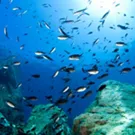
Diving: close contact with the Big Blue

Emilia Romagna, experience the land of flavours
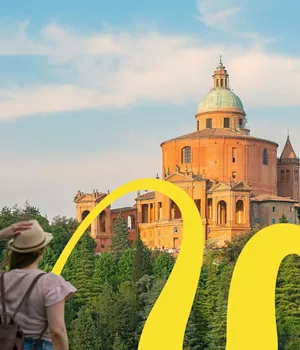
Rediscover your Italian roots

Italian cuisine around the world: a treasure that knows no boundaries
Create your ideal journey.
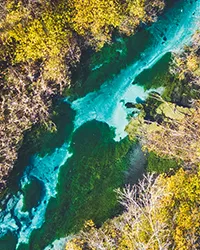
Art and culture

Relax and wellness
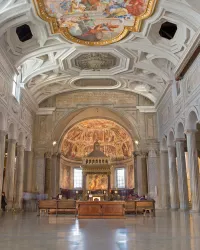
Spirituality

Shopping & Markets

Cycling Tourism
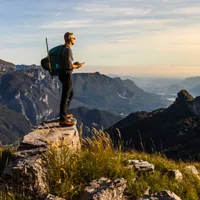
Social Wall
Italy seen by you.
Join the @italiait community and post your experiences

Continue living like an Italian
Subscribe to the Newsletter so as not to miss places, events and experiences for experiencing the best side of Italy: the authentic one.
Keep up to date
Would you like to learn about the most authentic experiences to be had in Italy, stay up to date on the most interesting events, discover our special offers and receive lots of insider hints and tips?
Save your favorite places
Create an account or log in to save your wishlist
Do you already have an account? Sign in

- Official program

Destination Italy: Mass Tourism and Its Effects on Italian Cities
Nov. 2 2:40 p.m..

Share this:
- Click to share on Facebook (Opens in new window)
- Click to share on Twitter (Opens in new window)

Don't miss a thing! Sign up to receive updates.

Official websites use .mass.gov
Secure websites use HTTPS certificate
A lock icon ( ) or https:// means you’ve safely connected to the official website. Share sensitive information only on official, secure websites.
- search across the entire site
- search in Office of Travel and Tourism
- search in Executive Office of Economic Development
Office of Travel and Tourism
MOTT promotes Massachusetts as a Year-round leisure and business travel destination. Our state has a lot to offer both domestic and international visitors, including history, culture, cuisine and outdoor activities.
What would you like to do?
Recent news & announcements, healey-driscoll administration unveils first-ever massachusetts ice cream trail, highlighting local dairy industry and small businesses , healey-driscoll administration launches new “made possible” tourism campaign to promote state history and culture, attract new travelers .
Learn more about the Massachusetts Office of Travel & Tourism at visitma.com
Upcoming Events
Help us improve mass.gov with your feedback.
The feedback will only be used for improving the website. If you need assistance, please Contact the Office of Travel and Tourism . Please limit your input to 500 characters.
Thank you for your website feedback! We will use this information to improve this page.
If you would like to continue helping us improve Mass.gov, join our user panel to test new features for the site.
To support our work, we invite you to accept cookies or to subscribe.
You have chosen not to accept cookies when visiting our site.
The content available on our site is the result of the daily efforts of our editors. They all work towards a single goal: to provide you with rich, high-quality content. All this is possible thanks to the income generated by advertising and subscriptions.
By giving your consent or subscribing, you are supporting the work of our editorial team and ensuring the long-term future of our site.
If you already have purchased a subscription, please log in
What is the translation of "mass tourism" in Italian?
"mass tourism" in italian, mass tourism {noun}.
- volume_up turismo di massa
Translations
- open_in_new Link to source
- warning Request revision
Context sentences
English italian contextual examples of "mass tourism" in italian.
These sentences come from external sources and may not be accurate. bab.la is not responsible for their content.
Monolingual examples
English how to use "mass tourism" in a sentence, english how to use "turismo di massa" in a sentence, similar translations, similar translations for "mass tourism" in italian.
- concentrare
- mezzi di comunicazione di massa
- ammassamento
- calcestruzzo
- turismo d'avventura
- radiografia di massa
- cultura di massa
- mass spectrometer
- mass spectrometry
- mass spectroscope
- mass spectroscopy
- mass spectrum
- mass starvation
- mass strike
- mass surrender
- mass tourism
- mass transfer
- mass transit
- mass transport
- mass transportation
- mass unemployment
- mass unrest
- mass upheaval
- mass uprising
- mass urbanization
- mass vaccination
Moreover, bab.la provides the English-Romanian dictionary for more translations.
Why register?
Enjoy an enhanced experience.
- Access all dictionaries for free
- Browse the whole site in any of 24 languages
- Translation tool with additional allowance
Mass Tourism: History, Types, Advantages & Disadvantages, Destinations and Its Impacts
Mass tourism is a form of tourism that involves the movement of large numbers of people to popular holiday destinations. It is often associated with package holidays, all-inclusive resorts, and organized tours. Mass tourism aims to provide travellers with a hassle-free vacation experience, where everything from transportation to accommodation and activities is planned and delivered by a single operator.
While mass tourism has been a boon for many destinations, it has also been criticized for its negative impact on local cultures, economies, and environments. The sheer number of tourists can overwhelm local infrastructure and resources, leading to overcrowding, pollution, and strain on natural resources. In addition, mass tourism can also lead to the commodification of local cultures, where traditional practices and customs are adapted to suit the needs and expectations of tourists. This can result in the loss of cultural authenticity and homogenization of local cultures.
Despite its drawbacks, mass tourism remains a popular form of travel for many people. It offers convenience, affordability, and the opportunity to visit popular destinations without worrying about the logistics of planning a trip. However, it is essential to consider the impact of mass tourism on local communities and the environment and to make responsible travel choices whenever possible.
Table of Contents
History of mass tourism.
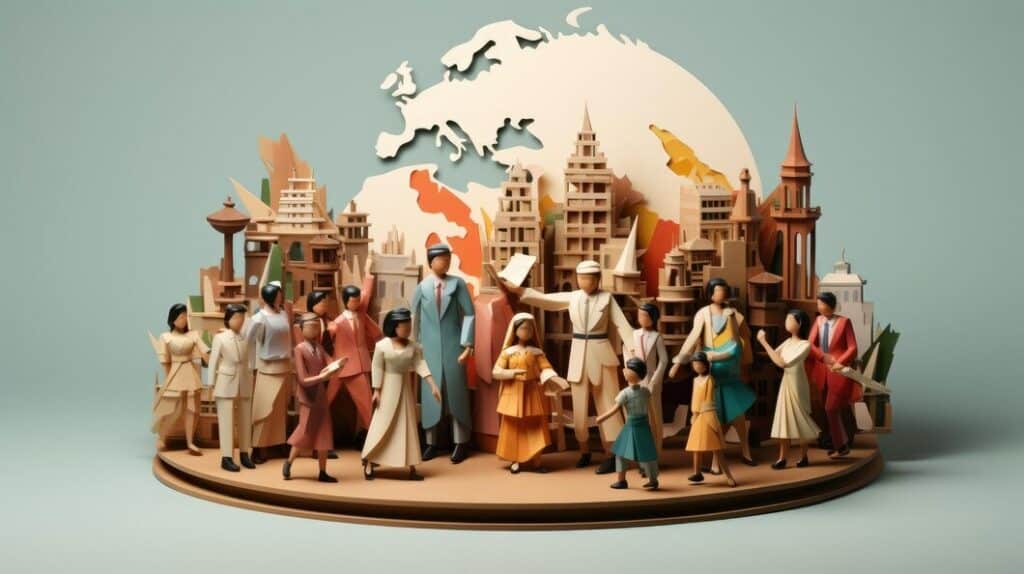
Mass tourism has a long and exciting history from the 19th century. The growth of leisure travel and its importance resulted from increased spending power, personal mobility, the development of public transport, and internationalization in modern communities.
Mass tourism began in 1851 when Thomas Cook led a mass of tourists to the Great Exhibition in London. A British entrepreneur, Cook is the father of modern tourism. He organized the first package tour , which involved people travelling together on a pre-planned itinerary. Cook’s innovation made travel affordable and accessible to the masses and quickly became popular.
The introduction of paid holidays in the early 20th century further fueled the growth of mass tourism. Workers were given time off from work to travel and explore new destinations. The concept of paid holidays was first introduced in the UK in 1938, and it quickly spread to other parts of the world. This increased the number of people travelling, creating a new market for the tourism industry .
The post-World War II period saw a significant increase in mass tourism. The airline industry’s growth , the development of new destinations, and the introduction of new technologies, such as the jet engine, made travel faster, cheaper, and more comfortable. This led to an explosion in the number of people travelling, creating a new industry that catered explicitly to mass tourism.
In conclusion, mass tourism has a rich and fascinating history that dates back to the 19th century. The growth of leisure travel, the introduction of paid holidays, and the development of new technologies have all contributed to the growth of mass tourism. Today, mass tourism is a significant industry that generates billions of dollars in revenue and employs millions worldwide.
Types of Mass Tourism

Mass tourism refers to the movement of a large number of organized tourists to popular holiday destinations for recreational purposes. It is a phenomenon which is characterized by the use of standardized package products and mass consumption. Here are some types of mass tourism:
- Cultural Tourism : This type of mass tourism involves visiting historical and cultural sites, museums, art galleries, and other places of cultural significance. Cultural tourism is popular among tourists who want to learn about a particular region or country’s history, traditions, and customs.
- Adventure Tourism : This type of mass tourism involves activities such as trekking, hiking, mountaineering, rock climbing, and other outdoor activities. Adventure tourism is popular among tourists seeking excitement and thrill during their holidays.
- Beach Tourism : This type of mass tourism involves visiting coastal areas, beaches, and islands. Beach tourism is popular among tourists who want to relax, sunbathe, swim, and engage in water sports.
- Ecotourism : This type of mass tourism involves visiting natural areas, wildlife reserves, and national parks. Ecotourism is popular among tourists who want to experience nature, observe wildlife, and learn about conservation efforts.
- Medical Tourism : This type of mass tourism involves travelling to another country for medical treatment. Medical tourism is popular among tourists who want to access medical treatments that are not available in their home country or are too expensive.
- Sports Tourism : This type of mass tourism involves travelling to attend or participate in sports events such as football matches, cricket matches, tennis tournaments, and other sporting events.
- Cruise Tourism : This type of mass tourism involves travelling on a cruise ship to visit multiple destinations. Cruise tourism is popular among tourists who want to relax, socialize, and enjoy onboard entertainment while visiting various destinations.
Mass tourism has positive and negative impacts on the environment, economy, and society. It is important to manage mass tourism sustainably and responsibly to minimize its negative effects and maximize its benefits.
Advantages of Mass Tourism
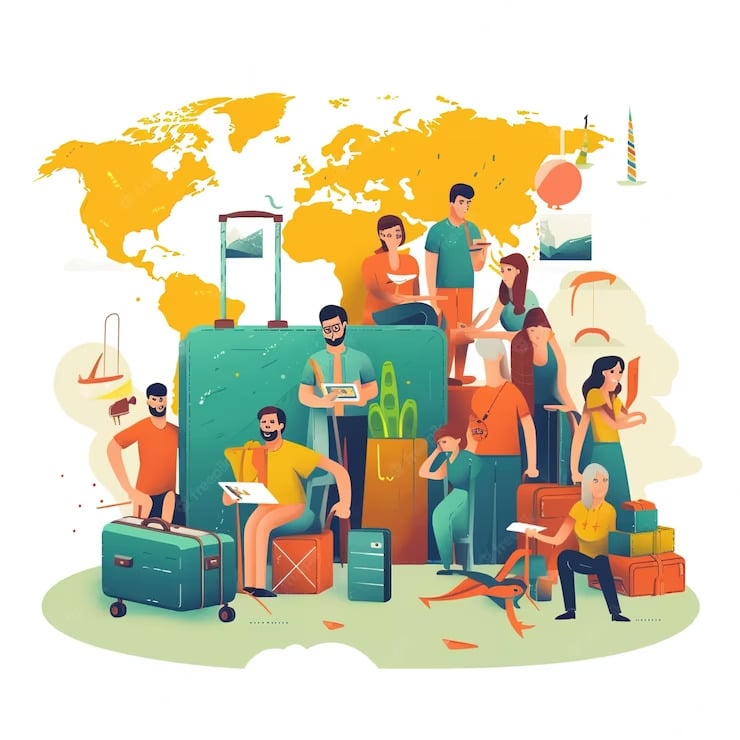
Mass tourism has several advantages, making it an essential part of the tourism industry. Here are some of the benefits of mass tourism:
Boosts Local Economy
Mass tourism can significantly boost the local economy of a tourist destination. It generates much revenue for local businesses, such as hotels , restaurants, and souvenir shops. This, in turn, creates job opportunities for the locals and helps improve their living standards. Mass tourism can also contribute to infrastructure development, such as roads, airports, and public transportation, which can benefit the local community even after the tourists have left.
Increases Cultural Exchange
Mass tourism can increase cultural exchange between tourists and locals. Tourists can learn about the local customs, traditions, and way of life, while locals can learn about the visitors’ culture. This cultural exchange can help to promote understanding and tolerance between different cultures and can also help to preserve the local culture by promoting it to a wider audience.
Provides Affordable Travel Options
Mass tourism provides affordable travel options for people who may not have the means to travel otherwise. The package deals offered by mass tourism companies can be significantly cheaper than individual travel arrangements. This makes travel more accessible to a wider range of people, including those on a budget.
Supports Conservation Efforts
Mass tourism can also support conservation efforts in tourist destinations. The revenue generated by mass tourism can be used to fund conservation projects, such as wildlife conservation and habitat restoration. This can help preserve the destination’s natural beauty and protect it for future generations.
Mass tourism has several advantages, making it an important part of the tourism industry. It can boost the local economy, increase cultural exchange, provide affordable travel options, and support conservation efforts. However, it is important to balance the advantages of mass tourism with its potential negative impacts, such as overcrowding, environmental degradation, and cultural homogenization.
Disadvantages of Mass Tourism

Mass tourism has become increasingly popular in recent years but has drawbacks. Here are some of the disadvantages of mass tourism:
1. Environmental Impact
One of the most significant disadvantages of mass tourism is the environmental impact. Mass tourism can lead to pollution, degradation of natural resources, and damage to ecosystems. The large number of tourists can put a strain on local resources, such as water and energy, and contribute to climate change.
2. Overcrowding
Mass tourism can lead to overcrowding in popular tourist destinations, which can cause inconvenience and discomfort for tourists and locals. Overcrowding can also lead to safety concerns and increase the risk of accidents and incidents.
3. Cultural Impact
Mass tourism can have a negative impact on local cultures and traditions. The influx of tourists can lead to a loss of cultural authenticity and homogenization of local cultures. This can also lead to losing traditional ways of life and displacement of local residents.
4. Economic Impact
While mass tourism can bring economic benefits to a destination, it can also have negative economic impacts. The reliance on tourism can lead to an unstable economy, and the profits from tourism may not benefit local communities. In some cases, tourism can also lead to inflation and increased living costs for locals.
5. Sustainability
Mass tourism is often unsustainable in the long term. The strain on local resources and ecosystems can lead to irreversible damage, and focusing on short-term profits can lead to neglecting long-term sustainability goals.
While mass tourism can bring economic benefits and opportunities for travellers, it is essential to consider its negative impacts on the environment, local communities, and cultures.
Mass Tourism Destinations
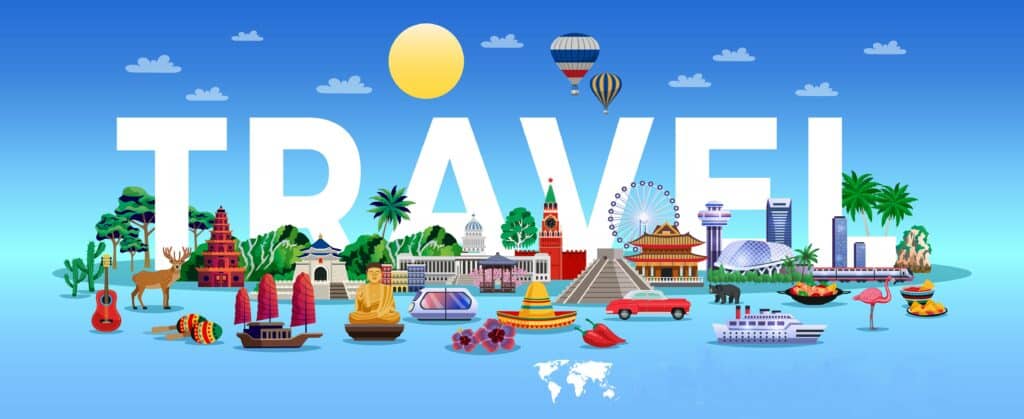
Mass tourism has become popular for people to explore new destinations and experience different cultures. The most popular mass tourism destinations include beaches, mountains, national parks, and historical sites. Here are some examples of popular mass tourism destinations:
Beaches are a popular destination for mass tourism. Some popular beaches include Goa in India, Santorini in Greece, and the Harbor Islands in Boston. These destinations offer beautiful beaches, crystal clear waters, and a variety of activities for tourists to enjoy.
Mountains are another popular destination for mass tourism. Central Massachusetts and the Greater Merrimack Valley are popular destinations for tourists who want to experience the beauty of the mountains. These destinations offer breathtaking views, hiking trails, and other outdoor activities.
National Parks
National parks are also popular destinations for mass tourism. Cape Cod National Seashore is a popular destination for tourists who want to explore the area’s natural beauty. The park offers hiking trails, beaches, and other outdoor activities.
Historical Sites
Historical sites are also popular destinations for mass tourism. The Pyramids of Giza in Egypt and the North of Boston are popular destinations for tourists who want to explore the history of the area. These destinations offer a glimpse into the past and a chance to learn about different cultures.
Overall, there are many popular mass tourism destinations for tourists to explore. Whether you are looking for a beach vacation, a mountain retreat, or a chance to explore historical sites, there is something for everyone.
Impact on Local Communities
Mass tourism significantly impacts local communities, and the effects can be positive and negative. While tourism can bring economic benefits to a region, it can also negatively impact the local culture, jobs, infrastructure, local businesses, gentrification, and over-tourism.
One of mass tourism’s most significant negative impacts on local communities is the erosion of local culture. As more tourists flock to a destination, the local culture can become homogenized, and the unique traditions and ways of life can be lost. This can lead to a loss of identity for the local community and a decline in cultural heritage.
Another negative impact of mass tourism is the effect on jobs. While tourism can create jobs in the hospitality and service industries, it can also lead to a decline in traditional industries. For example, in some regions, farming and fishing have been replaced by tourism, leading to a loss of traditional jobs and a decline in local economies.
Infrastructure can also be negatively impacted by mass tourism. As more tourists visit an area, the demand for infrastructure such as roads, airports, and hotels increases. This can lead to overcrowding, traffic congestion, and strain on local resources.
Local businesses can also be impacted by mass tourism. While some businesses may benefit from increased tourism, others may struggle to compete with larger international chains. This can lead to a decline in local businesses and a loss of economic diversity in the region.
Gentrification is another issue that can arise from mass tourism. As more tourists visit an area, property prices can rise, leading to the displacement of local residents. This can lead to social and economic inequality, as the local community is pushed out of its own neighbourhood.
Finally, mass tourism is a growing concern in many popular tourist destinations. When the number of tourists visiting a destination exceeds the region’s carrying capacity, it can lead to overcrowding, environmental degradation, and a decline in the quality of life for local residents.
In conclusion, while mass tourism can bring economic benefits to a region, it is essential to consider the impact on local communities. The negative impacts of mass tourism can be significant, and it is crucial to find a balance between economic growth and sustainable tourism practices.
Economic Aspects of Mass Tourism
Mass tourism can have a significant impact on the economy of a destination. It can generate income and create employment opportunities, but it can also put a strain on resources and infrastructure.
One of the main benefits of mass tourism is the income it generates for local economies. Tourists spend money on accommodation, food, transportation, and activities, which can contribute to the local economy. According to a report by the Massachusetts Office of Travel and Tourism, travel expenditures in Massachusetts in 2018 generated over $24 billion in direct spending, which supported over 150,000 jobs and generated $1.6 billion in state and local taxes.
However, mass tourism can also put a strain on resources and infrastructure. Popular tourist destinations may struggle to accommodate the influx of visitors during peak season, leading to overcrowding and strain on local resources such as water and energy. Additionally, the increased demand for goods and services can drive up prices, making it harder for locals to afford basic necessities.
Another economic aspect of mass tourism is profit. Large tourism companies may benefit from the high volume of tourists by making significant profits. However, smaller local businesses may struggle to compete with larger companies, leading to a concentration of wealth in the hands of a few.
Overall, the economic impact of mass tourism is complex and multifaceted. While it can generate income and create employment opportunities, it can also strain resources and infrastructure and concentrate wealth in the hands of a few.
Tourist Behavior and Expectations
Tourist behaviour and expectations play a crucial role in the mass tourism industry. Tourists are individuals who travel to different places for leisure, business, or other purposes. They have certain expectations and requirements from their travel experience, which can influence their behaviour during their stay.
One of the primary expectations of tourists is to have a comfortable and enjoyable experience. They expect high-quality accommodations, transportation, food, and entertainment options. Tourists also expect to be treated with respect and hospitality by the locals and the service providers. They want to feel welcomed and appreciated during their stay.
Another important aspect of tourist behaviour is their spending habits. Tourists tend to spend significant money on their travel, which can boost the local economy. However, they also expect value for their money and are likely to avoid places that are overpriced or do not meet their expectations.
Family tourists are a significant segment of the mass tourism industry. They have unique expectations and requirements, such as child-friendly accommodations, entertainment options, and safety measures. Family tourists also tend to plan their trips well in advance and are likely to choose destinations that offer a variety of activities for all members of the family.
Responsible tourism is another emerging trend in the mass tourism industry. Responsible tourists are conscious of their impact on the environment and the local communities. They expect the destinations and service providers to follow sustainable practices and reduce their carbon footprint. Responsible tourists will likely choose eco-friendly accommodations, participate in local conservation efforts, and support local businesses.
Overall, understanding tourist behaviour and expectations is essential for the success of the mass tourism industry. Service providers and destinations that meet and exceed these expectations will likely attract more visitors and generate higher revenues.
Role of Media and Internet
The role of media and the internet has greatly influenced the rise of mass tourism. With the advent of social media platforms such as Instagram, travellers are constantly exposed to images of exotic destinations and experiences, which can influence their travel decisions. In fact, a study suggests that social media has a significant impact on tourists’ choices of travel components, with most studies focusing on the impact of social media on behavioural intention.
The media has also played a vital role in promoting tourism, especially in countries where tourism is a major source of revenue. The media is often used to showcase a destination’s natural beauty, culture, and attractions, which can attract tourists. For example, television shows such as Anthony Bourdain’s “Parts Unknown” and Samantha Brown’s “Places to Love” have helped to promote off-the-beaten-path destinations to a wider audience.
The internet has also revolutionized the way people plan and book their travel. Travellers can now easily research and book flights, accommodations, and activities through online travel agencies and booking platforms. This has led to increased independent travel, where travellers can plan their own itineraries and customize their travel experiences.
However, the internet has also brought about challenges for the tourism industry. With the ease of access to information, travellers are now more aware of the negative impacts of tourism, such as overcrowding, environmental degradation, and cultural commodification. This has led to a rise in sustainable and responsible tourism practices, where travellers seek to minimize their impact on the environment and local communities.
Overall, the role of media and the Internet in mass tourism cannot be overstated. While it has brought about challenges, it has also opened up new opportunities for travellers to explore the world and for destinations to promote themselves to a wider audience.
Tour Operators and Travel Agents

Tour operators and travel agents play a significant role in mass tourism. They are intermediaries between the tourists and the service providers, such as hotels, airlines, and transportation companies. Their main function is to package and sell tours to holiday destinations, including flights, accommodation, and other services.
Travel agents are professionals who provide travel-related services to clients. They offer advice on travel destinations, make reservations for flights, hotels, and other services, and provide information on travel insurance, visas, and other travel-related documents. They earn a commission from the service providers for the services they sell.
On the other hand, tour operators specialize in organizing and selling packaged tours to holiday destinations. They create tour packages that include transportation, accommodation, meals, and other services. They work with travel agents to sell their tour packages to clients. Tour operators profit by buying services from service providers at a discounted rate and selling them to clients at a higher price.
Mass tourism has led to the growth of travel agents and tour operators. They have become essential players in the tourism industry, providing clients with a wide range of services. They have also contributed to the growth of the tourism industry by promoting tourism destinations and creating new tourism products.
One of the main advantages of using travel agents and tour operators is convenience. They provide a one-stop shop for all travel-related services, making it easy for clients to plan their holidays. They also offer expert advice on travel destinations and provide assistance in case of any problems during the trip.
However, there are also some disadvantages to using travel agents and tour operators. One of the main disadvantages is the cost. Travel agents and tour operators charge a commission for their services, which can add up to a significant amount. Moreover, some travel agents and tour operators may not provide accurate information or may misrepresent the services they offer.
In conclusion, travel agents and tour operators are essential players in the mass tourism industry. They provide clients with a wide range of services, including packaged tours, flights, accommodation, and other travel-related services. While they offer convenience and expert advice, they also have disadvantages, such as cost and potential misrepresentation of services.
Environmental Concerns
Mass tourism has been associated with a wide range of environmental concerns. One of the most significant environmental concerns is the impact of tourism on the natural environment. The increase in tourist activities has resulted in a higher demand for natural resources, such as water, energy, and land. This has led to the degradation of natural habitats, deforestation, and soil erosion in some areas.
Another environmental concern is the amount of waste generated by mass tourism. Tourists generate significant waste, including plastic bottles, food packaging, and disposable items. This waste often ends up in landfills or littered in the environment, leading to pollution and negative impacts on wildlife.
Sustainable travel is an approach that seeks to minimize the negative impact of tourism on the environment. This includes promoting green tourism practices, such as using renewable energy sources, reducing waste, and conserving natural resources. Sustainable travel also involves educating tourists about the importance of responsible tourism practices and encouraging them to participate in environmentally friendly activities.
Carrying capacity is another important concept in mass tourism. It refers to the maximum number of tourists a destination can accommodate without causing negative impacts on the environment. When the number of tourists exceeds the carrying capacity of a destination, it can lead to overcrowding, pollution, and damage to natural habitats.
Finally, carbon emissions associated with transportation and accommodation significantly contribute to climate change. Mass tourism is responsible for significant carbon emissions contributing to global warming. Sustainable travel practices, such as using public transportation, choosing eco-friendly accommodations, and offsetting carbon emissions, can help reduce the impact of tourism on climate change.
Future of Mass Tourism
Mass tourism has been a significant contributor to the global economy for decades. However, recent events have highlighted the need for a more sustainable and responsible approach to tourism. The COVID-19 pandemic has caused a significant decline in mass tourism, leading to the closure of many businesses and job losses. The future of mass tourism is uncertain, and it will likely require significant changes to adapt to the new reality.
One of the most significant challenges facing mass tourism is sustainability. The industry significantly impacts the environment, and there is a growing awareness of the need to reduce this impact. Governments and tourism organizations increasingly focus on sustainable tourism practices, such as reducing waste, conserving energy, and protecting natural resources. The future of mass tourism will depend on its ability to adapt to these new practices and become more sustainable.
Another challenge facing mass tourism is the changing preferences of travellers. Many people are now looking for more authentic and immersive travel experiences rather than traditional mass tourism offerings. This trend will likely continue, and mass tourism must adapt to meet these changing preferences.
Technology is also likely to play a significant role in the future of mass tourism. Advances in technology are making travel more accessible and convenient, and this trend will likely continue. For example, virtual reality technology is already used to provide immersive travel experiences, which will likely become more widespread.
In conclusion, the future of mass tourism is uncertain, but it is clear that significant changes will be required to adapt to the new reality. Sustainability, changing traveller preferences, and technology will likely be the key drivers of change in the industry. The industry’s challenge will be adapting to these changes while continuing to provide high-quality travel experiences for its customers.
In conclusion, mass tourism is a significant part of the tourism industry, associated with package holidays, popular tourist attractions, and well-known resorts. However, the growth of mass tourism has led to several challenges, including over-tourism, environmental degradation, and cultural homogenization.
The future of mass tourism is uncertain, with several factors influencing its growth and development. The rise of sustainable tourism, technological advancements, and changing consumer preferences will likely impact mass tourism’s future.
Despite the challenges, mass tourism continues to provide economic benefits to many destinations. However, balancing economic benefits with environmental and social sustainability is essential to ensure the industry’s long-term viability.
Overall, the future of mass tourism is complex and multifaceted, with several challenges and opportunities. It is crucial to adopt a holistic approach to tourism development, taking into account the economic, social, and environmental impacts of mass tourism.
To support our work, we invite you to accept cookies or to subscribe.
You have chosen not to accept cookies when visiting our site.
The content available on our site is the result of the daily efforts of our editors. They all work towards a single goal: to provide you with rich, high-quality content. All this is possible thanks to the income generated by advertising and subscriptions.
By giving your consent or subscribing, you are supporting the work of our editorial team and ensuring the long-term future of our site.
If you already have purchased a subscription, please log in
Qual è la traduzione di "mass tourism" in Italiano?
"mass tourism" traduzione italiano, mass tourism {sostantivo}.
- volume_up turismo di massa
- open_in_new Link alla fonte
- warning Richiedi la revisione della frase
Esempi di utilizzo
English italian esempi contestuali di "mass tourism" in italiano.
Queste frasi vengono da fonti esterne e potrebbero essere non accurate. bab.la non è responsabile per il loro contenuto.
Esempi monolingue
English come usare "mass tourism" in una frase, english come usare "turismo di massa" in una frase, traduzioni simili, traduzioni simili a "mass tourism" in italiano.
- concentrare
- mezzi di comunicazione di massa
- ammassamento
- calcestruzzo
- turismo d'avventura
- radiografia di massa
- cultura di massa
- mass spectrometer
- mass spectrometry
- mass spectroscope
- mass spectroscopy
- mass spectrum
- mass starvation
- mass strike
- mass surrender
- mass tourism
- mass transfer
- mass transit
- mass transport
- mass transportation
- mass unemployment
- mass unrest
- mass upheaval
- mass uprising
- mass urbanization
- mass vaccination
Inoltre per più traduzioni bab.la mette a tua disposizione il dizionario Spagnolo-Italiano .
Perché registrarsi?
Godetevi un'esperienza migliorata.
- Accesso gratuito a tutti i dizionari
- Sfogliare l'intero sito in una delle 24 lingue disponibili
- usi aggiunti per lo strumento traduttore

IMAGES
VIDEO
COMMENTS
For the 13 towns of the Amalfi Coast, Campania's tourism agency recorded 564,981 visitors in 2023, a 9% increase from 2019. Ten years ago, the number was 400,000. Hotel prices have risen on average by almost 40% compared to pre-pandemic levels, forcing many middle-income travelers to either stretch their finances or seek accommodation in less ...
Tourism is one of the main motors of Italian economy, but something has been going awry in the past few years. Senseless mass tourism hasn't really done all that good to Italy's small economy: our "botteghe" and small restaurants have been struggling against larger, cheaper made-in-China souvenir stores and fast food chains.
The most recent available polls from 2023 show some 20 percent of Italian voters say they would support Italy leaving the European Union, which is one of the highest rates in the bloc, though support for the idea had dropped by more than 9 percent since 2016-17.
127 millions tourists expected in Italy in 2023. With the removal of the covid restrictions, an insatiable need to travel has infected an increasing number of people, notably in Italy. This year, about 127 million arrivals are predicted (+11.2% over 2022), just 4 million fewer than the all-time high of 2019 and 1 million less than in 2018 ...
Mass tourism. Throughout the 17th to 18th centuries, the Grand Tour was mainly reserved for academics or the elite. ... The Bandiera arancione is a tourist-environmental quality recognition conferred by the Touring Club Italiano (TCI) to small towns in the Italian hinterland (maximum 15,000 inhabitants) which stand out for their quality ...
Yes, yes, absolutely yes. Here are 6 easy steps to enjoy a less crowded Italy and travel more sustainably. 1. Use e-bikes, e-scooters, and e-boats wherever possible. Rome and other Italian cities have started using electric transport, and all you need to ride is a smart phone to scan the QR code on the bike or scooter.
ITALIAN REGIONS ARE TAKING ACTION TO LIMIT MASS TOURISM. Since 2024, several regions in Italy have taken measures to address the negative impacts of mass tourism. For instance, in Venice, groups of over 25 people are not allowed, and starting April 25, visitors must purchase a day ticket, but only on specific days.
About 900 metres above sea level, it is enveloped and embraced by vibrant greenery: a pristine, untouched environment home to ancient trees, ponds and lakes, white rocks and shelters. The village is also known for its history of handcrafting scissors and knives. 3 of the best wellness itineraries in Emilia Romagna.
LIMIT MASS TOURISM Since 2024, several regions in Italy have taken measures to address the negative impacts of mass tourism. For instance, in Venice, groups of over 25 people are not allowed, and starting April 25, visitors must purchase a day ticket, but only on specific days. The "bed stop" policy has been enforced in South Tyrol since 2023.
I was in El Hierro, a heart-shaped rock formation off the west coast of Africa that's the youngest, most westerly and second smallest of the Canary Islands.The island emerged from the Atlantic ...
She is the author of two books: Empire's Mobius Strip: Historical Echoes in Italy's Crisis of Migration and Detention (Cornell, 2019) and The Beautiful Country: Tourism and the Impossible State of Destination Italy (Toronto, 2015). She also co-edited the volume, Italian Mobilities, with Ruth Ben-Ghiat (Routledge, 2015). Her essays and ...
MOTT promotes Massachusetts as a Year-round leisure and business travel destination. Our state has a lot to offer both domestic and international visitors, including history, culture, cuisine and outdoor activities. ... Learn more about the Massachusetts Office of Travel & Tourism at visitma.com . See all news and announcements for the Office ...
it Italiano ; Search dictionary. Italian à è é ì ò ù. expand ... As a result of mass tourism and the free movement of goods, services and persons, the volume of traffic moving from one state to another is greater than ever before. In seguito al turismo di massa, alla libera circolazione di merci ...
Mass tourism can lead to overcrowding in popular tourist destinations, which can cause inconvenience and discomfort for tourists and locals. Overcrowding can also lead to safety concerns and increase the risk of accidents and incidents. 3. Cultural Impact. Mass tourism can have a negative impact on local cultures and traditions.
Le temperature medie a Boston vanno dai -2º C a gennaio ai 22 º C a luglio. Il Massachusetts ha quattro distinte stagioni - in autunno le foglie creano un manto colorato che vi stupirà. Gli inverni sono soleggiati e la neve crea un paesaggio da fiaba. La primavera è un'esplosione di giunchiglie e le estati sono calde, ideali per ...
IN MASS TOURISM Filming locations have been popular holiday destinations since the early days of cinema. However, this trend has gained momentum with the rise of streaming platforms. Many tourists now plan their travels to explore famous landmarks, cities, and squares they have seen on the screen, giving this trend a name—"set-jetting."
mass tourism. turismo di massa m. Mostrare più. This beautiful indonesian island is actually a mass tourism victim. Questa fantastica isola indonesiana è però una vittima del turismo di massa. A pleasant room away from mass tourism. Una stanza piacevole, lontano dal turismo di massa.
English Italian Esempi contestuali di "mass tourism" in Italiano . Queste frasi vengono da fonti esterne e potrebbero essere non accurate. bab.la non è responsabile per il loro contenuto. That is the case with road transport, or some forms of mass tourism. more_vert. open_in ...
I've been realizing that the position I took on mass tourism a few weeks ago deserves a second look. This content was published on August 16, 2019 - 13:37 6 minutes
The heart-shaped island is off the tourist map with it receiving only a handful of visitors compared to its neighbours - approximately 20,300 visitors in 2023, while Tenerife, the largest Canary ...
But if you want to narrow it down a little, our travel guide has some must-sees for each region in Massachusetts, a highway map, and some really pretty photos. To receive a free Massachusetts Travel Guide in the mail, please fill out this form .